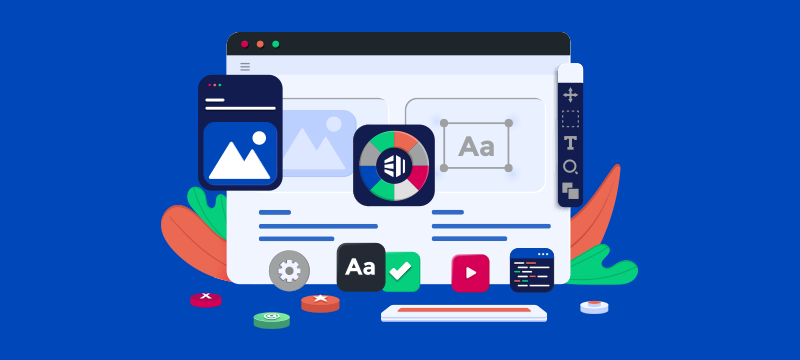In the constantly evolving world of web design, trends come and go, and keeping up with the latest developments is vital for designers and businesses alike. In 2023, it is worth taking a look at some of the design trends that are predicted to shape the digital landscape during the next 12 months and beyond.
- Immersive 3D worlds
The growing fascination with virtual reality technology, especially with the rise of metaverses, has led web designers to start creating sites that have completely rendered 3D environments. These websites tend to prioritise style over realism, resulting in imaginative and escapist worlds that users can immerse themselves in. While this trend requires significant effort and cost, it can be particularly valuable for one-time promotions. - Voice-activated interfaces
With the rise of voice assistants, like Alexa, voice-activated interfaces are becoming more common on websites. These interfaces are often much easier and faster to use than typing or clicking and they can help with user accessibility.
Additionally, voice interfaces can be used to personalise the user experience by recognising and responding to individual users’ voices and preferences. With personalisation being a key element of CX and much in demand from users, websites that adopt this relatively new and exciting technology can quickly differentiate themselves from their competitors, attracting new and retaining existing customers. - Hover animations
Hover animations have been used for micro-interactions for years, but web designers are now taking this further by transforming standard page elements into spectacular product reveals. This trend accomplishes several goals at once: it enhances speed browsing and provides a tempting taste of how a product might look or be used. It can also introduce a new foreground dimension to the site and create a feeling of discovery for visitors. - Digital maximalism
Designers are countering the trend for minimalist user experiences by creating the complete opposite, digital maximalism, a shift in approach that aims to highly stimulate visitors. Perhaps not ideal for every brand, this trend eradicates white space and customises nearly every page element to create innovative websites that are eccentric, expressive and unconventional. This is obviously a design that is intended for specific audiences and can cause issues for users with accessibility needs. - Repurposing the 404 page
404-error pages are what appear when a link is broken or a user types in the wrong URL. Traditionally, these have been rather boring pages that issue a brief message ‘Oops something went wrong!’ and a link back to the homepage.
In order to remove the disappointment for the user, today’s designers are turning 404 pages into an experience by adding engaging animations and even interactive elements, like games. - Parallax zoom scrolling
Parallax zoom scrolling is a technique used on websites to create the illusion of depth and motion by making background elements move at a different speed than foreground elements as the user scrolls. Designers typically use large, high-resolution background images or videos that fill the entire screen and as the user scrolls down, the background elements move at a slower rate than the foreground, giving the impression of a three-dimensional space.
Not only does this create an engaging visual effect; it can also be used to guide the user’s attention to specific areas of the page or to enhance the storytelling aspect of a website. - Textual layouts
Textual layouts are an aspect of website design that uses the arrangement and presentation of typography to create visual interest and enhance the overall user experience. They can also be used to establish a brand identity and express a desired mood or tone. With careful design, they can capture the viewer’s attention quickly, giving visitors impactful words and creative text arrangements that can be just as engaging as visual imagery.
This trend is increasing in popularity because by focusing on text and reducing the number of images on a page, the site loads quicker, improving SEO, and uses fewer server resources, potentially cutting the costs of hosting and reducing the environmental impact of running the site.
Conclusion
The design trends of 2023 are all about creating unique experiences for visitors. Whether it’s through the use of 3D worlds, parallax zoom scrolling, digital maximalism, animation, typographic layouts, repurposing the 404 pages or deploying voice-activated interfaces, designers are finding innovative ways to engage and entertain their audiences. Businesses that make use of these trends can create web experiences that are memorable and leave a lasting impact on their audience.
Looking to create an outstanding website of your own? Check out our easy-to-use, feature-filled Website Builder or build a WordPress website with our WordPress Hosting Plans.


